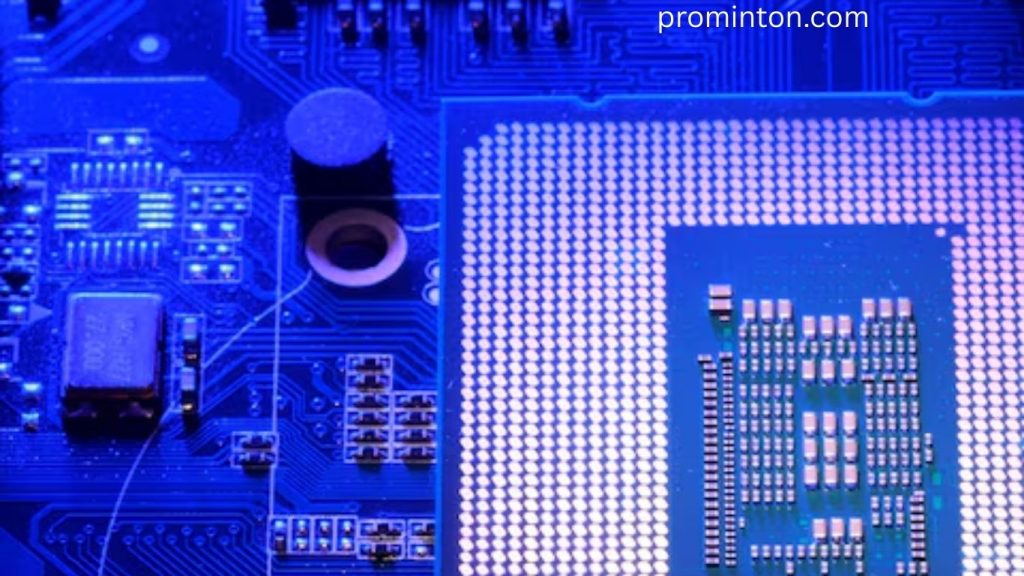The Trump administration is reportedly preparing to impose fresh tariffs on foreign electronic devices based on the number of semiconductor chips they contain. According to three people familiar with the matter, the proposal—still under discussion—seeks to accelerate the reshoring of advanced manufacturing to the United States. If enacted, it could mark a major escalation in Washington’s ongoing trade strategy, with broad implications for consumers, businesses, and the global technology supply chain.
Read More: AI Startup Modular Secures $250 Million to Boldly Challenge Nvidia’s Reign
A New Tariff Model Focused on Chips
Unlike traditional tariffs, which apply to overall product categories, this proposal introduces a novel approach. The U.S. Commerce Department is said to be weighing a percentage tariff on imported electronics, calculated against the estimated value of the chip content within each device. In practice, this would mean that items ranging from household appliances and smartphones to laptops and even electric toothbrushes could face price hikes depending on how many chips they use.
While the plan has not been finalized and could change, its underlying goal is clear: to push multinational companies to move more production to the U.S. and reduce dependence on overseas manufacturing.
White House Position
A White House spokesperson, Kush Desai, defended the rationale behind the plan, framing it as a matter of national and economic security.
“America cannot be reliant on foreign imports for the semiconductor products that are essential for our national and economic security,” Desai said.
He added that the administration is following a “multi-faceted approach” to strengthening domestic industry, combining tariffs with tax cuts, deregulation, and energy independence.
Possible Impact on Consumer Prices
Economists warn that the new tariff structure could significantly affect consumer prices at a time when inflation already exceeds the Federal Reserve’s 2% target. Michael Strain, an economist with the American Enterprise Institute, said the plan risks fueling inflationary pressures.
“The cost of consumer goods could rise dramatically if tariffs on chip-heavy products go forward,” Strain explained. “Even U.S.-made goods may become more expensive since many domestic manufacturers still rely on foreign chip inputs.”
Broader Trade Context
The latest tariff discussions come as President Donald Trump pursues a sweeping trade agenda aimed at reshoring critical industries. Just days earlier, his administration unveiled new tariffs on several imports, including 100% duties on branded pharmaceuticals and 25% levies on heavy-duty trucks.
Earlier this year, Washington also launched probes into imports of semiconductors and pharmaceuticals, citing national security risks tied to overreliance on foreign production.
Semiconductor Supply Chain at the Center
At the heart of the policy debate lies the semiconductor industry, a globalized sector dominated by a few key players. Taiwan Semiconductor Manufacturing Company (TSMC) and South Korea’s Samsung Electronics are among the largest non-U.S. chipmakers. Their products power nearly every modern electronic device, from smartphones to cars.
The U.S., while home to design leaders like Intel, Nvidia, and Qualcomm, has long relied on overseas manufacturing facilities, especially in Asia. This dependence was sharply highlighted during the COVID-19 pandemic when global supply disruptions caused severe chip shortages, halting car production lines and driving up electronics prices.
Proposed Tariff Rates and Exemptions
One source told Reuters that the Commerce Department is considering a 25% tariff rate for chip-related content in imported devices. Electronics from Japan and the European Union may face slightly lower rates of around 15%. These figures are preliminary and subject to revision.
The administration has also floated an exemption system tied to investment in U.S.-based manufacturing. Under the idea, companies could earn a dollar-for-dollar exemption if they shift at least half of their production to the U.S. However, details remain unclear, and it is not certain whether this provision will move forward.
Inflationary Risks
The biggest challenge for policymakers is balancing the drive for domestic manufacturing with the risk of higher prices. Tariffs generally act as a tax on imports, and companies often pass those costs on to consumers. With inflation already elevated, additional tariffs could worsen household budgets, particularly for electronics that are now considered essential.
Economists caution that this timing could be politically risky. While reshoring resonates with voters concerned about jobs and national security, higher consumer prices may spark backlash.
Industry and Global Reactions
Global electronics manufacturers and foreign governments are watching developments closely. For companies like Apple, Samsung, and Dell, which rely on complex global supply chains, chip-focused tariffs could create new cost burdens and force supply chain adjustments.
Foreign governments, particularly in Asia and Europe, may view the move as discriminatory and inconsistent with World Trade Organization (WTO) rules. Retaliatory measures cannot be ruled out, raising the possibility of a new wave of trade tensions.
U.S. Semiconductor Push
The proposed tariff plan aligns with broader U.S. efforts to strengthen semiconductor production domestically. In recent years, Washington has committed billions in subsidies and incentives under the CHIPS and Science Act to encourage companies to build fabrication plants in the U.S.
Intel, TSMC, and Samsung have already announced major investments in U.S. manufacturing facilities, though many of these plants will take years to become operational. The administration appears determined to speed up this trend by adding tariff pressure to financial incentives.
The Bigger Picture
For President Trump, tariffs have been a hallmark of economic policy since his first term. Supporters argue that they protect American industries from unfair foreign competition, while critics contend they distort markets and ultimately burden consumers.
The chip-based tariff plan reflects the administration’s broader strategy: leverage trade policy not just for economic competition but also for national security. In an era where semiconductors power everything from smartphones to fighter jets, securing control over the chip supply chain has become a top geopolitical priority.
Frequently Asked Questions:
What tariffs is the Trump administration considering on foreign electronics?
The administration is weighing tariffs on imported electronic devices based on the number and value of semiconductor chips inside each product.
How would chip-based tariffs affect consumer prices in the U.S.?
Experts warn that prices for electronics such as laptops, smartphones, and household appliances could rise significantly, adding to inflationary pressures.
Why is the U.S. government focusing on semiconductor chips?
Semiconductors are vital for national security and economic stability. The administration wants to reduce reliance on foreign chipmakers and encourage domestic production.
Which countries and companies could be most impacted by these tariffs?
Major chipmakers outside the U.S., including Taiwan Semiconductor Manufacturing Company (TSMC) and South Korea’s Samsung Electronics, could face higher trade barriers.
Are there any exemptions planned for companies?
Yes. Reports suggest the Commerce Department may offer exemptions for companies investing in U.S.-based manufacturing, though details remain unclear.
How do these tariffs connect to America’s inflation concerns?
By raising the cost of imported goods, the tariffs could push inflation higher, complicating the Federal Reserve’s efforts to maintain its 2% target.
What other industries are facing new tariffs under the Trump administration?
Alongside electronics, the administration has announced tariffs on branded pharmaceuticals, heavy-duty trucks, and is investigating imports of semiconductors and other critical goods.
Conclusion
The Trump administration’s potential plan to impose chip-based tariffs on foreign electronics represents a bold step in reshaping America’s trade and industrial policy. By targeting semiconductors—the backbone of modern technology—the administration aims to reduce U.S. reliance on overseas supply chains, strengthen national security, and incentivize domestic manufacturing. However, the move carries significant economic risks, including higher consumer prices and possible trade disputes with allies.



